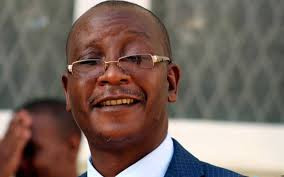
Artists come in a wide range of communities of practice, ranging from musicians, sculptors, poets, painters, photographers, dancers, drawing, landscaping, sportspersons, actors, cartoonists, cultural artists, motivation speakers, graphics, collage and many others. The artists’ efforts are quite critical in humanity’s efforts to address the climate change problems.
Artists can transform the climate change question by providing creative and innovative components of climate change adaptation, awareness and education through their versatile initiatives, creativity and diversity.
The idea of using art for climate change engagements is to provoke, evoke mental images, captivate, entertain and educate or even protest and advocate in order to influence environmental policies.
Observers always develop interests in various forms of art, and then they will make some follow-ups on best possible ways to interact with the environment.
As based on their mandate of inspiring their audiences, artists will do the same during climate change engagements, so that audiences are influenced, induced and motivated to associate with their favourite artists as a form of climate action.
Visual art is cross-cutting, cross-cultural and cross-languaging just as climate change visuals in the form of photographs, images of destructive floods and cyclone or hunger and famine appeal to overall human senses.
Visual arts communicate stories of natural or human influenced changes on the environment over the years.
Photographing of physical and social landscaping, deforestation and land degradations, including deteriorating infrastructure would save to communicate and transform the climate challenges in creative and multi-modal ways.
- Chamisa under fire over US$120K donation
- Mavhunga puts DeMbare into Chibuku quarterfinals
- Pension funds bet on Cabora Bassa oilfields
- Councils defy govt fire tender directive
Keep Reading
Through various forms of art, people are sufficiently eco-socialised, connected and engaged to conservation issues.
Works of art are comprehensive enough to build both verbal and pictorial bridges which appeal to human ecological needs, desires and necessities.
Various forms of art are expressive and impressive as well as being therapeutic through music, docu-drama, sculpturing, works of cartoons, landscaping, poetry and dances, among a host of many. In this regard, artists have unlimited roles to move the conservation discourse forward and change the human behaviours and attitudes contributed to global warming.
A wide range of arts are not designed in isolation or for communication massaging, but they are composed according to the people’s underlying needs and world-views. These are results of creative self-expressions, intrinsic motivations, leading to environmental awareness and innovations, because creativity connects and binds, informs, empowers and engages.
Environmental conservation and climate action strategies through works of art, leading to resilience should not just be empty, flat or uninspiring, but should be unifying and goal bound.
These various forms of art are part of a wide ranging tools, designed to add value, not only to the people’s lives, but to the environment as a laboratory of human livelihoods and learning.
A number of environmental themes like deforestation, pollution, global warming, hunger and famine, flooding, forest fires, fossil fuels burning or land degradation are well communicated and expressed through visual art.
Instead of marketing and designing, environmental art can be used for environmental activism and advocacy in order to influence policy changes. In this regard, various forms of arts on environmental issues can be integrated with climate change discourse so that climate action and adaptation can be realised for the overall greening processes.
Therefore, the partnership between artists and environmentalists can be the missing link in this climate change discourse. It is high time artists, environmentalists and policymakers worked hand in glove in shaping the environment positively.
Above all, effective communication tools should be designed so that they appeal to both artists, environmentalists and policymakers.
Artists, through their enterprising forms, have creative and versatile ways of conveying information to the public, in a manner that can stimulate climate action.
Audiences can learn about critical adaptation strategies according to their cultural standpoints as opposed to being continuously lectured and tutored without being participatory. These modes of learning normally compromise the aesthetic elements and values of works of art.
Artists’ advocacy cut across literacy boundaries by driving innovations and moulding communities’ cultural character, as climate change advocacy is about building characters and human preparedness.
Peter Makwanya is a climate change communicator. He writes in his personal capacity and can be contacted on: petrovmoyt@gmail.com










